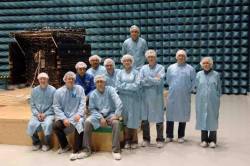San Jose, California–based SiRF Technology expects to close this fiscal quarter on its purchase of Centrality Communications, Inc., a provider of navigation processor solutions for mobile navigation devices.
In exchange for all of the outstanding capital stock of Centrality, including equity awards, SiRF has agreed to pay $283 million in a combination of cash and shares of SiRF common stock, with the exact amount to be determined at the time of closing. The boards of directors of both companies have approved the merger.
San Jose, California–based SiRF Technology expects to close this fiscal quarter on its purchase of Centrality Communications, Inc., a provider of navigation processor solutions for mobile navigation devices.
In exchange for all of the outstanding capital stock of Centrality, including equity awards, SiRF has agreed to pay $283 million in a combination of cash and shares of SiRF common stock, with the exact amount to be determined at the time of closing. The boards of directors of both companies have approved the merger.
The 12-year-old SiRF, a leading provider of GPS-enabled silicon and software location platforms, has focused on low-power, high-sensitivity features and network-assisted GPS techniques.
Its SiRFstar technology is found in high-volume products from portable navigation device (PND) manufacturers such as Tom-Tom and GARMIN as well as mobile phones but has also been widely adopted by GPS OEM and ODM companies. An announcement at the Intel Developer Forum in Beijing, China, in April revealed that SiRFstarIII-GSC3LT architecture will provide the GPS-based location awareness for products based on the new Intel Ultra Mobile Platform 2007.
SiRF’s acquisition of Centrality — headquartered in Redwood City, California, but with its engineering design center based in Shanghai, China — will add a company focused on navigation infotainment systems (NIS) market and bring new multifunction system-on-a-chip (SoC) platform expertise to SiRF.
Sorting Out the Strengths. Centrality’s product families include Atlas and the higher end, richer-featured 40-channel TitanV5 technology, both designed to link readily with and provide on-chip support to a range of peripheral devices — LCDs, cameras, music, smart media, DVDs, and so forth
Kanwar Chadha, SiRF cofounder and vice-president of marketing, emphasized the “strong algorithmic differentiation” between the two companies. “SiRF has focused on algorithms which improve overall location platform; Centrality is focused on platforms that strengthen multi-media, multifunction technology.”
Chadha observed that SiRF’s acquisition strategy and in-house development over the past couple of years has focused on multifunction location platforms.
Early last year, for instance, SiRF bought TrueSpan, Inc., which had developed a silicon and software platform that incorporates OFDM (orthogonal frequency division multiplexing — a technique for transmitting large amounts of digital data over a radio wave). The move brought Sanjai Kohli, founder and chief technology officer of TrueSpan and one of the co-founders of SiRF, will back to SiRF as chief technology officer.
Earlier this year, SiRF licensed Wi-Fi Positioning System (WPS) technology from Skyhook Wireless, Inc., in order to create a single positioning system for wireless carriers. This system is part of SiRF’s Multimode Location Platform to be introduced later this year,
“This (Centrality) acquisition was the next logical step to add strong SOC and multimedia (MM) capabilities,” Chadha said. “We’ll come out with a range of multifunction location platforms. Some of them may be radiocentric; some may be media-centric. Some may have all of the capabilities.
“The market is not a single-product, single-requirement market,” he added. “Product development variables include functionality, price point, power consumption, performance.
Rob Baxter, Centrality’s president and CEO, said the companies will develop “an accelerated and differentiated product roadmap” for their generally complementary technologies, customer bases, and markets.





